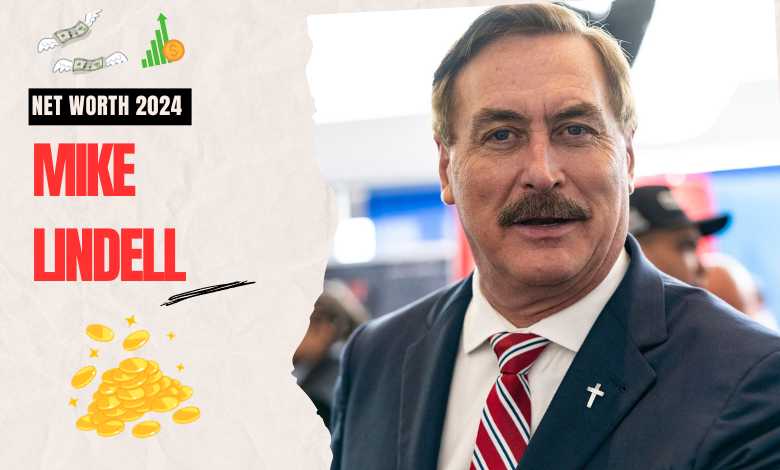Mike Lindell Net Worth: The Rise and Fall of the My Pillow Founder
Mike Lindell, the founder and CEO of My Pillow, was once a symbol of American entrepreneurship, with a net worth estimated to be as high as $300 million. However, as of 2024, Lindell's net worth has plummeted to $0 due to a series of legal battles, business losses, and financial missteps. This article dives into the remarkable rise and dramatic fall of Mike Lindell’s fortune, exploring how his involvement in election conspiracy theories and controversial claims led to his financial ruin.

 Mike Lindell’s Peak Net Worth and Success Story
Mike Lindell’s Peak Net Worth and Success Story
At the height of his success, Mike Lindell’s net worth was estimated between $200 million and $300 million. His company, My Pillow, was thriving, generating over $100 million annually. Launched in 2005, My Pillow quickly became a household name thanks to Lindell’s aggressive marketing strategy, which included frequent infomercials and commercials. By 2016, the company’s products were featured in major retail stores such as Walmart, Bed Bath & Beyond, and Kohl’s, contributing to a valuation of around $500 million.
The Downward Spiral: Election Controversies and Legal Troubles
Lindell’s financial troubles began after the 2020 presidential election when he became one of the most vocal supporters of former President Donald Trump’s unfounded claims of voter fraud. Lindell’s public stance and involvement in spreading conspiracy theories led to numerous retailers dropping My Pillow products from their shelves, significantly affecting the company’s revenue.
In addition to lost business, Lindell faced a $1.3 billion defamation lawsuit filed by Dominion Voting Systems for his false claims regarding the company’s involvement in election rigging. To defend himself and continue pushing his election fraud narrative, Lindell reportedly spent between $25 million and $50 million of his personal wealth. In 2023, he admitted that these legal expenses, along with the costs of launching and maintaining his social media platform, Frank Social, drained his finances.
My Pillow’s Decline and Lost Revenue
Before the controversies, My Pillow was a thriving business. At its peak, the company generated over $280 million in annual revenue. However, following Lindell’s controversial political activities, major retailers like Walmart and Bed Bath & Beyond stopped carrying My Pillow products. The company’s revenue dropped by 95%, going from $110 million per year to just $5 million by 2023.
Lindell’s financial woes were further compounded by the increasing costs of maintaining his business. In March 2023, he revealed that he had been forced to borrow $10 million to keep My Pillow afloat. Additionally, he sold assets, including a building in Minnesota, to stay solvent. Lindell’s drastic measures weren’t enough to reverse his financial decline, leading him to declare that he had “lost everything.”
Legal Fees and Mounting Debts
Lindell’s legal battles didn’t stop with the Dominion lawsuit. In October 2023, his attorneys in the defamation case requested to withdraw due to millions in unpaid legal fees. In response, Lindell publicly stated that he was “out of money” and had “lost every dime.” This statement marked a dramatic fall from his once-massive fortune.
Adding to his troubles was a $5 million lawsuit linked to his “Prove Mike Wrong Challenge,” a reward he offered to anyone who could debunk his election fraud claims. A cybersecurity expert successfully did so, leading an arbitration panel to order Lindell to pay the $5 million reward in April 2023. Lindell’s refusal to honor this payment highlighted his deepening financial crisis.
From Success to Financial Ruin: A Cautionary Tale
Mike Lindell’s journey from being a multimillionaire entrepreneur to claiming he’s “lost everything” is a stark reminder of how quickly fortunes can change. His story began with inspiring success—transforming a small pillow business into a national brand. However, his descent into financial ruin was driven by his involvement in political controversies, massive legal fees, and business decisions rooted in his personal beliefs rather than financial stability.
Early Life and Struggles
Mike Lindell was born on June 28, 1961, in Mankato, Minnesota, and grew up in Carver and Chaska. His early life was marked by challenges that would later define his remarkable, yet turbulent journey. After dropping out of the University of Minnesota, Lindell developed a crippling addiction to cocaine, which worsened in the 1990s when he began using crack cocaine. His addictions led to severe consequences, including the foreclosure of his home and the collapse of his first marriage.
At one point, Lindell’s drug addiction spiraled so out of control that his dealers intervened, refusing to sell to him and even attempting to babysit him until he slept. In 2009, after years of struggle, Lindell claims he found sobriety through prayer, marking a turning point in his life and setting the stage for his entrepreneurial success with My Pillow.
The Rise of My Pillow
In the late 2000s, Lindell began selling his My Pillow product at trade shows and fairs. Despite initial struggles, he officially founded My Pillow, Inc. in 2009, and the company’s fortunes skyrocketed after a 2011 infomercial that cost $500,000 to produce. The infomercial was a massive hit, running up to 200 times a day and rapidly expanding the business. Within weeks, Lindell grew his workforce from just five employees to 500.
My Pillow’s success was rooted in its relentless marketing strategy and Lindell’s willingness to invest heavily in advertising. By 2017, My Pillow was selling in major retail chains across the U.S. and Canada, generating revenues of nearly $280 million annually and employing more than 1,600 people. At this time, My Pillow had become a household name, and Lindell was at the peak of his financial success, enjoying a net worth of up to $300 million.
The Turning Point: Political Involvement and Controversies
Lindell’s fortunes took a dramatic turn after he became an outspoken supporter of Donald Trump. His close association with Trump and vocal promotion of false election fraud claims after the 2020 presidential election caused significant backlash. Retailers like Walmart, Bed Bath & Beyond, and Kohl’s dropped My Pillow products, severely impacting the company’s revenue.
Lindell’s deep dive into political conspiracies also led to a $1.3 billion defamation lawsuit from Dominion Voting Systems. As he continued to pour millions into legal battles and attempts to prove his unfounded claims, Lindell’s personal wealth evaporated. At one point, he claimed to have spent $1 million per month on his social media platform, Frank Social, and between $25 and $50 million overall to support his efforts to overturn the election results.
Financial Collapse and Legal Woes
By 2023, Lindell’s financial situation had deteriorated dramatically. My Pillow’s annual revenue dropped to just $5 million, a stark contrast to its previous highs. Lindell’s mounting legal fees and the declining performance of his business forced him to borrow $10 million to keep My Pillow afloat. He also had to sell assets, including a building in Minnesota, just to stay liquid.
In October 2023, his financial struggles became even more public when his attorneys filed to withdraw from representing him due to millions in unpaid legal fees. Lindell openly admitted that he was “out of money” and had lost everything he had built over the years.
Personal Life and Philanthropy
Lindell’s personal life has been marked by both challenges and moments of generosity. He was married twice, first to Karen Dickey, with whom he shares four children, and later to Dallas Yocum, a marriage that ended after just one month.
Despite his struggles, Lindell has engaged in philanthropic efforts. In 2012, he founded the Lindell Foundation to help drug addicts recover and, in 2019, launched the Lindell Recovery Network to extend his support for those battling addiction. His commitment to helping others stems from his own journey of recovery, which remains a central part of his public identity.

 Mike Lindell’s Peak Net Worth and Success Story
Mike Lindell’s Peak Net Worth and Success Story





